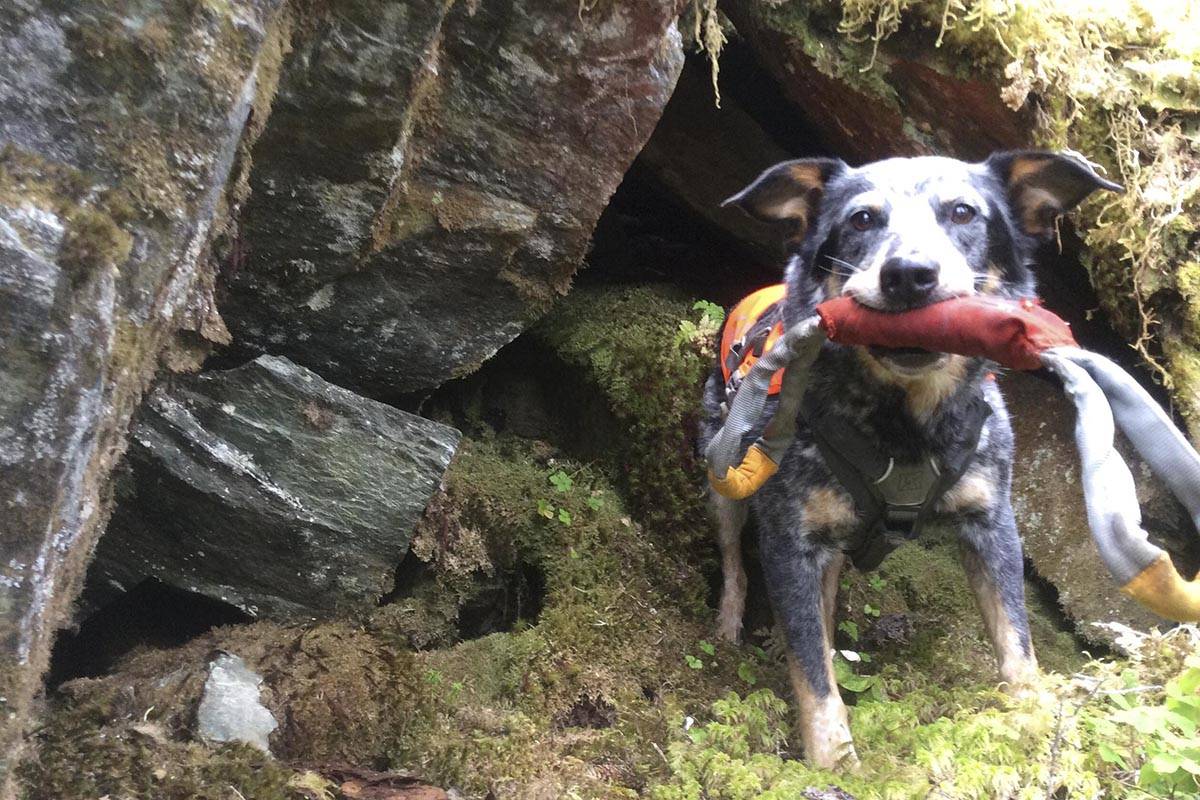Finding bats is no simple task even in an urban setting. But to find them in the wilderness? You need a special set of eyes for that.
Or a nose.
“In 2007, Dr. Carol Chambers assessed the ability of scent detection dogs to locate bats that were roosting in trees and snags in the summer in northern Arizona,” said Tory Rhoads, a wildlife biologist with the Alaska Department of Fish and Game. “Detection dogs are also frequently used to locate bat carcasses at wind turbine facilities.”
Rhoads is part of a larger project monitoring bat populations and behavior in Alaska, keeping a close eye on the spread of white-nose syndrome among the population of little brown bats, Myotis lucifugus. Little brown bats are one of six species of bats living in Juneau, Rhoads said.
White-nose syndrome is a fungal infection that only affects hibernating bats, Rhoads said, beginning on the East Coast in North America. It’s thought to originate in Europe or Asia, Rhoads said, and while it doesn’t affect every species, it kills between 95% and 100% of those it does affect.
To monitor the bats, they needed to locate the caves and crannies where the small mammals hibernate through the winter, called hibernacula. That proved difficult until they came up with an innovative solution: Jack the dog.
[Going to bat for Juneau’s winged mammals]
“The main issue we faced locating bat hibernacula before Jack was simply trying to figure out which outcrops bats were using and, even more complicated, which holes at those outcrops they were using,” Rhoads said.
Bats on the East Coast tend to hibernate in large groups, exclusively in caves and mines, Rhoads said. On the West Coast and Alaska, they tend to be more widely dispersed and not clustered as tightly, Rhoads said. But finding them without some help is extremely difficult.
“Given the limitations of trail cameras (limited field of view, distance needed to trigger, sensitivity) trying to locate which hole(s) and which outcrops bats are using is very much like trying to find the proverbial needle in the haystack,” Rhoads said in an email.
Jack was trained using a variety of stimuli, including guano, scent swabs, live bat fur and dead bats. Jack and his handler, Collette Yee, helped Rhoads and others locate hibernacula along the Mansfield Peninsula ridge on Admiralty Island and in the ridges near Fish Creek in north Douglas.
The project will continue this summer, with more help from Jack help locate and study Juneau’s bat population.
• Contact reporter Michael S. Lockett at 757.621.1197 or mlockett@juneauempire.com.

